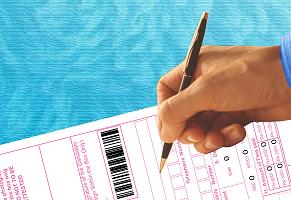Need for Budget
It is not as if the Government can tax, borrow and spend money the way it likes. Since there is a limit to the resources, the need for proper budgeting arises to allocate scarce resources to various Governmental activities. Every item of expenditure has to be well thought out and total outlay worked out for a specific period. Prudent spending is essential for the stability of a Government and proper earnings are a pre-requisite to wise spending. Hence, planned expenditure and accurate foresight of earnings are sine-qua-none of sound Governmental finance. Demands for Grants
The estimates of expenditure included in the Budget and required to be voted by Lok Sabha are in the form of Demands for Grants. These Demands are arranged Ministry-wise and a separate Demand for each of the major services is presented. Each Demand contains first a statement of the total grant and then a statement of the detailed estimate divided into items. Railway Budget
The Budget of the Indian Railways is presented separately to Parliament and dealt with separately, although the receipts and expenditure of the Railways form part of the Consolidated Fund of India and the figures relating to them are included in the 'Annual Financial Statement'.
Budget Presentation
The Budget is presented to Parliament on such date as is fixed by the President. The Budget speech of the Finance Minister is usually in two parts. Part A deals with general Economic Survey of the country while Part B relates to taxation proposals. General Budget was earlier being presented at 5 P.M. on the last working day of February, but since 2001 the General Budget is being presented at 11 A.M. on the last working day of February, i.e. about a month before the commencement of the Financial year except in the year when General Elections to Lok Sabha are held.Key elements and Budget Documents
Alongwith the 'Annual Financial Statement Government presents the following documents: an Explanatory Memorandum briefly explaining the nature of receipts and expenditure during the current year and the next year and the reasons for variations in the estimates for the two years, the Books of Demands showing the provisions Ministry-wise and a separate Demand for each Department and service of the Ministry. The Finance Bill which deals with the taxation measures proposed by Government is introduced immediately after the presentation of Budget . It is accompanied by a memorandum explaining the provisions of the Bill and their effect on the finances of the country.
Vote on Account
The discussion on the Budget begins a few days after its presentation. In a democratic set-up, Government is anxious to give Parliament full opportunity to discuss the budgetary provisions and the various proposals for taxation. Since Parliament is not able to vote the entire budget before the commencement of the new financial year, the necessity to keep enough finance at the disposal of Government in order to allow it to run the administration of the country remains. A special provision is, therefore, made for "Vote on Account" by which Government obtains the Vote of Parliament for a sum sufficient to incur expenditure on various items for a part of the year.Cut Motions
Motions for reduction to various Demands for Grants are made in the form of Cut Motions seeking to reduce the sums sought by Government on grounds of economy or difference- of opinion on matters of policy or just in order to voice a grievance.Appropriation Bill
After the General Discussion on the Budget proposals and Voting on Demands for Grants have been completed, Government introduces the Appropriation Bill. The Appropriation Bill is intended to give authority to Government to incur expenditure from and out of the Consolidated Fund of India. The procedure for passing this Bill is the same as in the case of other money Bills.Finance Bill
The Finance Bill seeking to give effect to the Government's taxation proposals which is introduced in Lok Sabha immediately after the presentation of the General Budget, is taken up for consideration and passing after the Appropriation Bill is passed. 